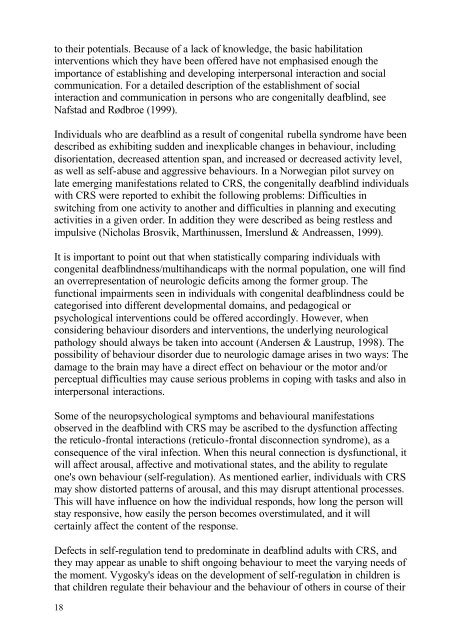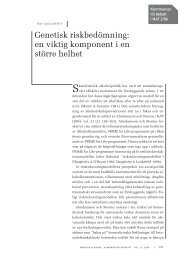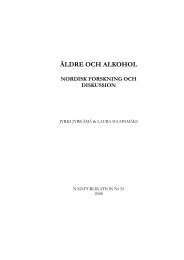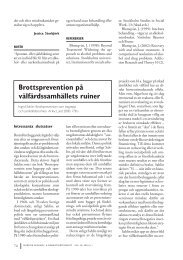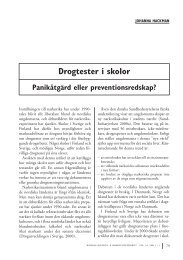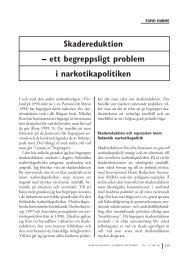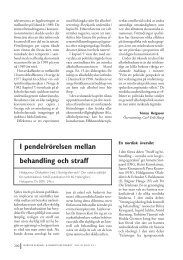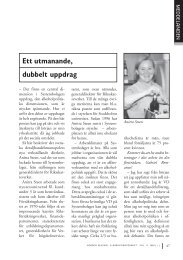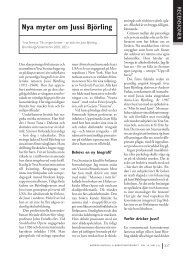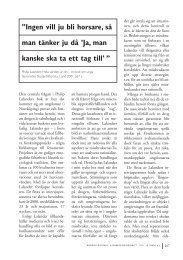CONGENITAL RUBELLA SYNDROME
CONGENITAL RUBELLA SYNDROME
CONGENITAL RUBELLA SYNDROME
You also want an ePaper? Increase the reach of your titles
YUMPU automatically turns print PDFs into web optimized ePapers that Google loves.
to their potentials. Because of a lack of knowledge, the basic habilitation<br />
interventions which they have been offered have not emphasised enough the<br />
importance of establishing and developing interpersonal interaction and social<br />
communication. For a detailed description of the establishment of social<br />
interaction and communication in persons who are congenitally deafblind, see<br />
Nafstad and Rødbroe (1999).<br />
Individuals who are deafblind as a result of congenital rubella syndrome have been<br />
described as exhibiting sudden and inexplicable changes in behaviour, including<br />
disorientation, decreased attention span, and increased or decreased activity level,<br />
as well as self-abuse and aggressive behaviours. In a Norwegian pilot survey on<br />
late emerging manifestations related to CRS, the congenitally deafblind individuals<br />
with CRS were reported to exhibit the following problems: Difficulties in<br />
switching from one activity to another and difficulties in planning and executing<br />
activities in a given order. In addition they were described as being restless and<br />
impulsive (Nicholas Brosvik, Marthinussen, Imerslund & Andreassen, 1999).<br />
It is important to point out that when statistically comparing individuals with<br />
congenital deafblindness/multihandicaps with the normal population, one will find<br />
an overrepresentation of neurologic deficits among the former group. The<br />
functional impairments seen in individuals with congenital deafblindness could be<br />
categorised into different developmental domains, and pedagogical or<br />
psychological interventions could be offered accordingly. However, when<br />
considering behaviour disorders and interventions, the underlying neurological<br />
pathology should always be taken into account (Andersen & Laustrup, 1998). The<br />
possibility of behaviour disorder due to neurologic damage arises in two ways: The<br />
damage to the brain may have a direct effect on behaviour or the motor and/or<br />
perceptual difficulties may cause serious problems in coping with tasks and also in<br />
interpersonal interactions.<br />
Some of the neuropsychological symptoms and behavioural manifestations<br />
observed in the deafblind with CRS may be ascribed to the dysfunction affecting<br />
the reticulo-frontal interactions (reticulo-frontal disconnection syndrome), as a<br />
consequence of the viral infection. When this neural connection is dysfunctional, it<br />
will affect arousal, affective and motivational states, and the ability to regulate<br />
one's own behaviour (self-regulation). As mentioned earlier, individuals with CRS<br />
may show distorted patterns of arousal, and this may disrupt attentional processes.<br />
This will have influence on how the individual responds, how long the person will<br />
stay responsive, how easily the person becomes overstimulated, and it will<br />
certainly affect the content of the response.<br />
Defects in self-regulation tend to predominate in deafblind adults with CRS, and<br />
they may appear as unable to shift ongoing behaviour to meet the varying needs of<br />
the moment. Vygosky's ideas on the development of self-regulation in children is<br />
that children regulate their behaviour and the behaviour of others in course of their<br />
18


